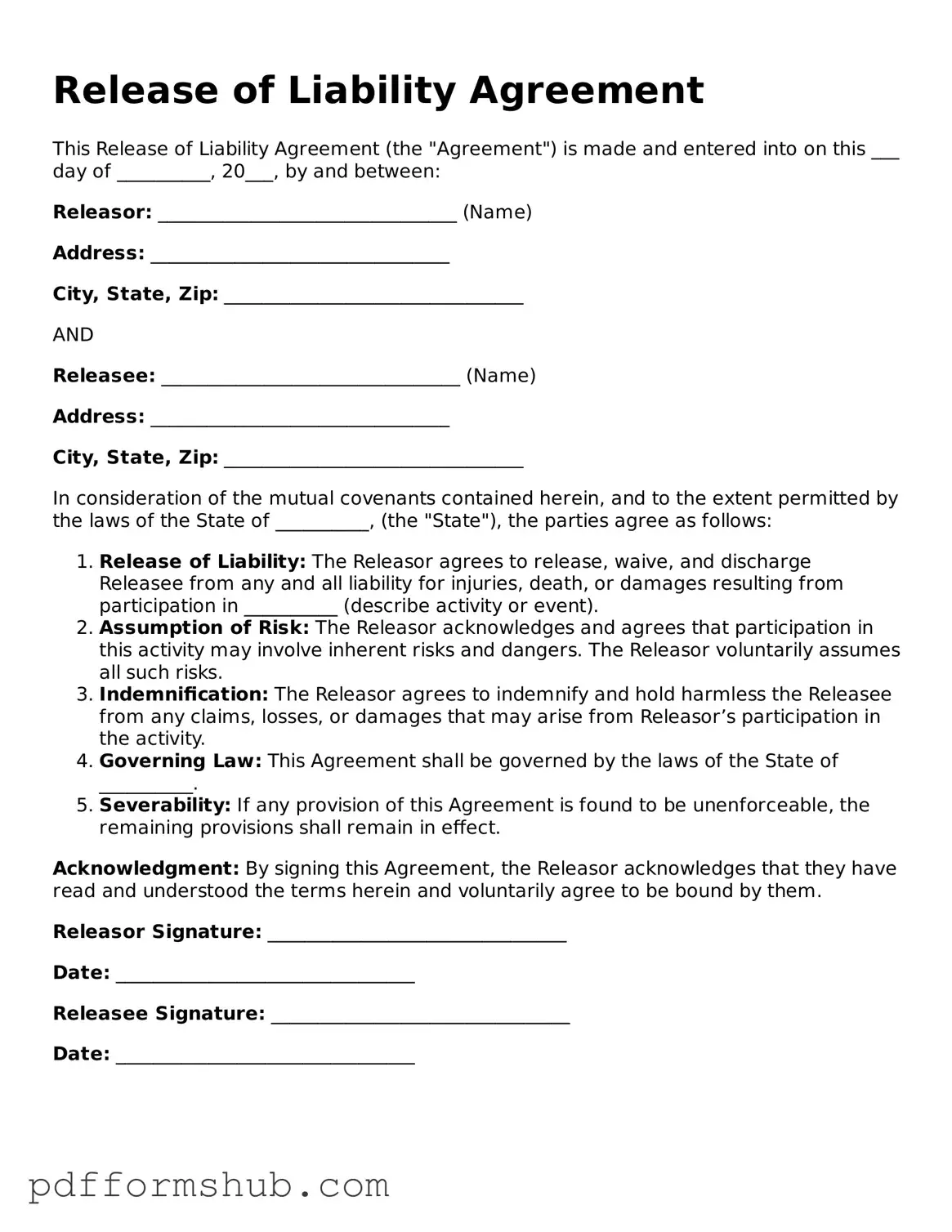The Release of Liability form serves as a critical tool in various activities, ranging from sports and recreational events to professional services and business transactions. This document is designed to protect one party from legal claims made by another, particularly in situations where risks are inherent. By signing this form, individuals acknowledge the potential dangers involved and agree to waive their right to sue for any injuries or damages that may occur. It outlines the responsibilities of both parties, ensuring that the individual understands the risks and accepts them voluntarily. This form is not just a legal safeguard; it also fosters transparency and mutual understanding between parties involved. Whether you’re participating in a community event, engaging in outdoor adventures, or receiving professional services, being informed about the implications of a Release of Liability form is essential. It empowers individuals to make informed decisions while enjoying activities that carry some level of risk.
